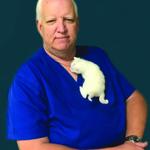LACONIA — May is Stroke Awareness Month, and as the stroke coordinator for Concord Hospital-Laconia and Concord Hospital-Franklin, here are some of the common symptoms and risk factors within my community.
In the hospital setting, we use the acronym “BE FAST” for recognizing stroke symptoms. Each letter stands for the following stroke symptoms: balance loss (or coordination issues), eyes (vision loss or change), facial droop or numbness, arm weakness, speech slurring or difficulty, time to call 911. BE FAST is good at identifying symptoms for ischemic strokes.
A severe and sudden headache without a similar history can also be a symptom of a hemorrhagic stroke.
Concord Hospital-Laconia is an accredited acute stroke ready hospital, while Concord Hospital-Franklin is staffed by the same providers, nurses and medics with all the same protocols and policies for providing the best stroke response and quality care.
We work closely with our EMS partners throughout the surrounding towns for not only prompt recognition, but utilizing a pre-alert notification to our hospital prior to arrival to ensure our stroke team is ready to meet the patient immediately on arrival.
Each minute of an acute stroke equals 2 million neurons lost. Time is brain. So, we want to make sure you are calling 911 for you or a loved one with any stroke symptoms.
For both ischemic and hemorrhagic strokes, the No. 1 risk factor is high blood pressure. If you have high blood pressure it is very important to keep it controlled with prescribed medication and to take it as prescribed. Most people don’t know where their blood pressure trends so it is a very good practice to get it checked regularly. The American Heart Association recommends keeping your blood pressure below 120/80, ideally.
Other major risk factors include an irregular heart rhythm called atrial fibrillation, diabetes, high cholesterol, previous stroke or transient ischemic attack, or a family member with a stroke, daily alcohol consumption and smoking cigarettes.
The more risk factors you have, the more likely you are to have a stroke.
A transient ischemic attack, or TIA, is also referred to as a “mini stroke.” When this happens, the stroke symptoms resolve pretty quickly after they began and there is no evidence of a stroke on brain imaging. This means the clot was small enough that the body was able to dissolve it on its own, but it is an indicator that there could be another event and close follow up with your primary care provider and/or a neurologist is recommended.
To learn more about stroke symptoms and risk factors, visit the American Stroke Association at stroke.org.
•••
Delia Canfield has been a registered nurse for 21 years, including 17 in the emergency department. A certified emergency nurse and a stroke certified registered nurse, she is the stroke coordinator for Concord Hospitals-Laconia and Concord Hospital-Franklin.



















(0) comments
Welcome to the discussion.
Log In
Keep it Clean. Please avoid obscene, vulgar, lewd, racist or sexually-oriented language.
PLEASE TURN OFF YOUR CAPS LOCK.
Don't Threaten. Threats of harming another person will not be tolerated.
Be Truthful. Don't knowingly lie about anyone or anything.
Be Nice. No racism, sexism or any sort of -ism that is degrading to another person.
Be Proactive. Use the 'Report' link on each comment to let us know of abusive posts.
Share with Us. We'd love to hear eyewitness accounts, the history behind an article.